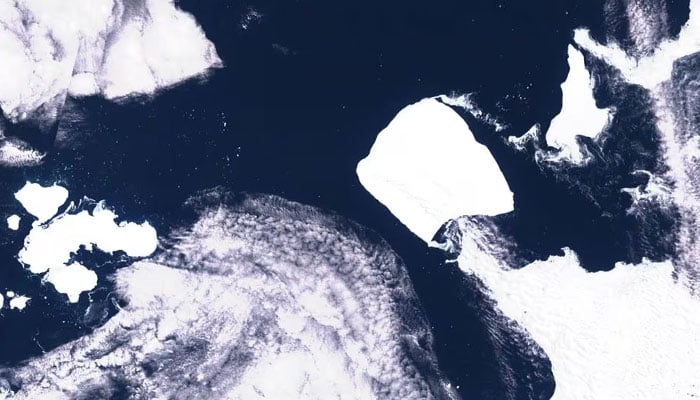Measuring almost 4,000 square-km, A23a is approximately three times the size of New York City

The world’s largest iceberg, A23a, has broken free from its three-decade-long stationary state, marking a significant event as it navigates towards the Southern Ocean.
Measuring almost 4,000 square kilometres, approximately three times the size of New York City, this colossal Antarctic iceberg has been largely immobile since calving off West Antarctica’s Filchner-Ronne Ice Shelf in 1986.
Recent satellite imagery reveals that it is now swiftly drifting past the northern tip of the Antarctic Peninsula, propelled by robust winds and ocean currents.

British Antarctic Survey glaciologist Oliver Marsh notes the rarity of witnessing an iceberg of this magnitude in motion, emphasizing that scientists will closely monitor its trajectory.
As A23a gains momentum, it is expected to enter the Antarctic Circumpolar Current, propelling it towards the Southern Ocean through “iceberg alley,” where similar ice formations are commonly found.
The reason behind A23a’s sudden movement remains uncertain. Marsh speculates that over time, the iceberg may have slightly thinned, gaining extra buoyancy that enabled it to lift off the ocean floor and be propelled by currents. A23a is also among the world’s oldest icebergs.
There is a possibility that A23a could become grounded again, potentially at South Georgia Island, posing challenges for the region’s wildlife. Millions of seals, penguins, and seabirds breed and forage in the area, and the colossal iceberg could disrupt their access.
While there’s a chance it may break into smaller pieces like its predecessor A68 in 2020, A23a’s sheer scale raises concerns about its longevity in the Southern Ocean, potentially reaching as far north as South Africa and disrupting shipping routes.

